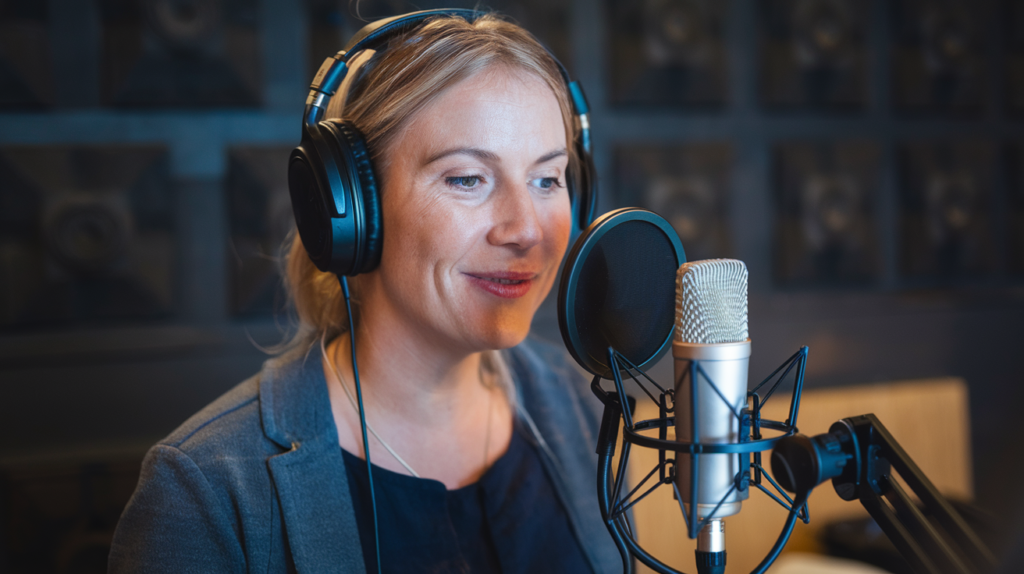Key Takeaways
- Cultural Sensitivity: Successful video localization for New Zealand goes beyond translation; it requires understanding and incorporating local customs, traditions, and humor to create relatable content.
- Engaging Local Talent: Utilizing local voice actors enhances authenticity by ensuring that regional accents and colloquialisms resonate with Kiwi audiences, fostering trust and emotional connection.
- Visual Relevance: Adapting visuals to reflect New Zealand’s landscapes and cultural elements is crucial for creating a meaningful narrative that speaks directly to viewers.
- Language Nuances: Incorporating unique slang and idiomatic expressions elevates relatability, making the content feel familiar and inviting to the audience.
- Utilizing Tools Effectively: Leveraging translation software, subtitle tools, and voiceover platforms streamlines the localization process while maintaining high-quality standards in your video content.
- Addressing Challenges: Recognizing potential challenges such as cultural diversity, language differences, and technical adjustments is essential for successful video localization in New Zealand.
Are you struggling to connect with your audience in New Zealand? Localizing video for New Zealand isn’t just about translating words; it’s about creating a genuine connection that resonates with viewers. With its unique culture, diverse landscapes, and distinct language nuances, getting it right is crucial.
When you tailor your content for Kiwis, you’re not just adapting the visuals and audio—you’re embracing their way of life. From understanding local slang to respecting cultural references, every detail matters. If you want your videos to stand out and engage effectively, diving into localization is key. Let’s explore how you can transform your video content into something that truly speaks to the heart of New Zealanders.
Understanding Video Localization
Video localization means adapting video content to meet the cultural and linguistic needs of a specific audience. For New Zealand, it involves more than just translating scripts; it’s about creating an authentic experience for viewers. Engaging local voice talent plays a crucial role in this process.
Using local voice actors ensures that your message resonates with Kiwis. They understand not only the language but also the subtleties of regional accents and dialects. This connection makes your video feel more relatable, fostering trust with your audience.
Incorporating local slang and cultural references enhances engagement further. When viewers see familiar terms or concepts, they feel valued and understood. This approach builds a strong emotional connection between the content and its audience.
While choosing voice over talent, consider their familiarity with New Zealand culture. A skilled voice artist can convey nuances that align with local sentiments, enhancing overall impact. Whether you’re targeting urban centers or rural communities, selecting the right voice actor is essential for effective communication.
Localization also includes adjusting visuals to reflect New Zealand’s stunning landscapes and diverse population. Showcasing recognizable landmarks or featuring relatable characters reinforces your message’s relevance.
Ultimately, successful video localization creates a seamless experience for viewers in New Zealand by integrating language, culture, and visuals into one cohesive narrative that speaks directly to them.
Importance Of Localizing Video For New Zealand
Localizing video content for New Zealand holds significant value. It ensures your message resonates with Kiwis, fostering a deeper connection that transcends mere language translation.
Cultural Relevance
Cultural relevance is crucial when localizing video for any audience, particularly in New Zealand. Incorporating local customs, traditions, and humor makes the content relatable and engaging. Using visuals that reflect New Zealand’s stunning landscapes or diverse population can create an instant connection. Additionally, integrating elements of Māori culture showcases respect and understanding of the local heritage. Without this cultural alignment, your message risks falling flat or being misunderstood.
Language Considerations
Language plays a vital role in video localization. While English is widely spoken in New Zealand, unique slang and colloquialisms pepper everyday conversations. Utilizing these terms can enhance relatability and authenticity in your videos. Engaging local voice talent familiar with regional accents ensures clarity and strengthens viewer trust. A voice artist who understands subtle nuances can convey emotions effectively, making the content more compelling. When you adapt language to suit your audience’s preferences, you elevate their overall viewing experience significantly.
Best Practices For Localizing Video
Localizing video for New Zealand effectively requires an understanding of its unique cultural landscape. It’s crucial to connect authentically with your audience through tailored content that resonates.
Engaging Local Talent
Engaging local voice talent enhances the authenticity of your video. Native speakers understand regional accents, idioms, and cultural nuances, making the message relatable. When you choose a local voice actor, you’re not just hiring someone to read lines; you’re selecting an individual who can convey emotions and sentiments that resonate with Kiwis. This connection fosters trust and rapport with viewers.
Consider auditioning multiple voice artists to find one whose style aligns perfectly with your brand’s message. Ensure they’re comfortable with colloquialisms and slang specific to New Zealand culture—this familiarity enriches the overall viewer experience.
Adapting Content For Local Audiences
Adapting content for local audiences involves more than just translation; it means reshaping visuals and narratives to reflect what matters most to them. Integrate elements from New Zealand’s stunning landscapes or popular landmarks in your videos—they create a sense of place that viewers can relate to.
Incorporating local customs, humor, and even aspects of Māori culture demonstrates respect for heritage while engaging audiences on a deeper level. Keep language considerations at the forefront; using unique expressions or slang makes content feel familiar and inviting.
Ultimately, successful localization blends engaging visuals with well-selected voiceovers from talented locals. This synergy creates a seamless narrative that speaks directly to the heart of New Zealanders, ensuring your message doesn’t just get heard but truly resonates.
Tools And Resources For Video Localization
When localizing video content for New Zealand, specific tools and resources streamline the process. These help ensure your video resonates deeply with local audiences.
Translation Software
Utilize translation software to handle multilingual scripts effectively. Look for platforms that support collaboration among multiple users, enabling real-time editing and feedback. Popular options include:
- SDL Trados Studio – Offers advanced translation memory features.
- Memsource – Provides cloud-based solutions for team collaboration.
Subtitle and Captioning Tools
Adding subtitles or captions enhances accessibility and engagement. Consider using tools like:
- Amara – Allows community-driven subtitle creation.
- Rev.com – Provides professional captioning services with quick turnaround times.
Voiceover Talent Platforms
Finding skilled voice talent is crucial for authentic localization. Explore online platforms where you can access a diverse pool of voice actors familiar with New Zealand accents and dialects. Some reputable options are:
- Voices.com – Connects clients with various voice artists across different styles.
- Fiverr – Features freelance voiceover talents at varied price points.
Audio Editing Software
Editing audio ensures clarity in your localized videos. Use software such as:
- Audacity – A free tool perfect for basic editing tasks.
- Adobe Audition – Offers advanced features for professional-quality sound design.
Cultural Insights Resources
Understanding cultural nuances enhances relatability in your content. Research local customs, slang, and references by accessing resources like:
- New Zealand Geographic Magazine – Offers insights into local culture and landscapes.
- Te Ara: The Encyclopedia of New Zealand – Provides comprehensive information on Māori culture and history.
Leveraging these tools fosters an efficient localization process, ensuring that your video speaks directly to Kiwis’ hearts while maintaining authenticity through well-chosen voice talent.
Challenges In Localizing Video For New Zealand
Localizing video for New Zealand presents unique challenges that require attention to detail. Cultural nuances play a significant role. You must consider the diverse backgrounds of Kiwis, including Māori heritage and regional variations. This diversity necessitates careful selection of voice talent that reflects local identities and accents, ensuring your message resonates authentically.
Adapting language also poses challenges. Incorporating local slang and colloquialisms is essential for relatability. Misunderstandings can arise when using generic terms or phrases unfamiliar to the audience. For instance, what’s common in other English-speaking countries might not hold the same meaning in New Zealand.
Visual elements demand equal scrutiny as well. Showcasing stunning landscapes and everyday life is crucial but requires sensitivity to cultural contexts. Not every visual works for every audience; ensure your imagery aligns with local customs and traditions.
Technical aspects add another layer of complexity. Synchronizing audio with visuals becomes vital when working with different dialects or speech patterns. The pacing may vary between regions, affecting viewer engagement if not addressed properly.
Finally, you face logistical hurdles during production—such as sourcing suitable voice actors within budget constraints while meeting deadlines without compromising quality. Balancing these factors can be challenging yet rewarding when executed correctly.
These challenges emphasize the importance of collaboration with knowledgeable professionals who understand New Zealand’s market dynamics, culture, and preferences in video localization efforts.
Conclusion
Localizing video for New Zealand is more than just translation; it’s about crafting a narrative that truly connects with your audience. By embracing local culture and understanding regional nuances you can create content that resonates deeply with Kiwis. Engaging local voice talent and incorporating authentic cultural elements will enhance relatability and build trust.
Navigating the challenges of localization requires careful planning and collaboration with professionals who know the market inside out. When you prioritize cultural relevance and authenticity in your videos you’ll not only engage viewers but also foster lasting connections. This approach can significantly elevate your brand’s presence in New Zealand, making it resonate among its diverse audiences.
Frequently Asked Questions
What is video localization?
Video localization is the process of adapting video content to meet the cultural, linguistic, and emotional needs of a specific audience. This involves translating dialogue as well as incorporating local slang, customs, and visuals that resonate with viewers.
Why is localizing video for New Zealand important?
Localizing video for New Zealand ensures that content connects authentically with Kiwis. It respects their unique culture, landscapes, and language nuances, enhancing viewer engagement and trust.
How can I choose the right voice talent for New Zealand video localization?
Select voice talent familiar with New Zealand’s accents and dialects to enhance relatability. Audition multiple artists to find one whose style aligns with your brand message.
What role does cultural relevance play in video localization?
Cultural relevance is crucial in making content relatable; incorporating local customs, traditions, humor, and elements of Māori culture creates an emotional connection with viewers.
What tools can I use for video localization?
Consider using translation software like SDL Trados Studio or Memsource. For subtitles or captions, platforms such as Amara or Rev.com are helpful. Additionally, audio editing software like Audacity ensures clarity in your localized videos.
Are there challenges in localizing videos for New Zealand audiences?
Yes, challenges include understanding diverse backgrounds among Kiwis and selecting appropriate voice talent. Ensuring language accuracy while aligning visuals with cultural contexts also adds complexity to the process.
How do visuals impact the effectiveness of localized videos?
Visuals must reflect New Zealand’s stunning landscapes and diverse population to reinforce messages effectively. Culturally sensitive imagery enhances relatability and strengthens viewer connections.
Where can I find resources on New Zealand culture for better localization?
Resources such as New Zealand Geographic Magazine or Te Ara: The Encyclopedia of New Zealand offer valuable insights into local customs that can inform your video’s narrative and themes.







